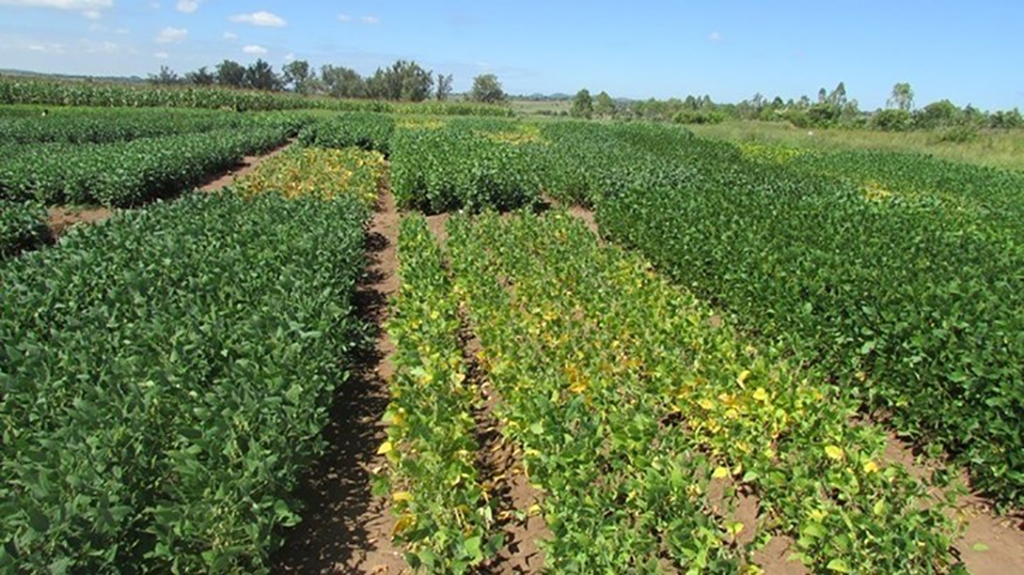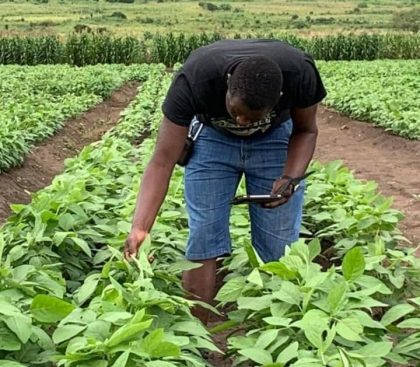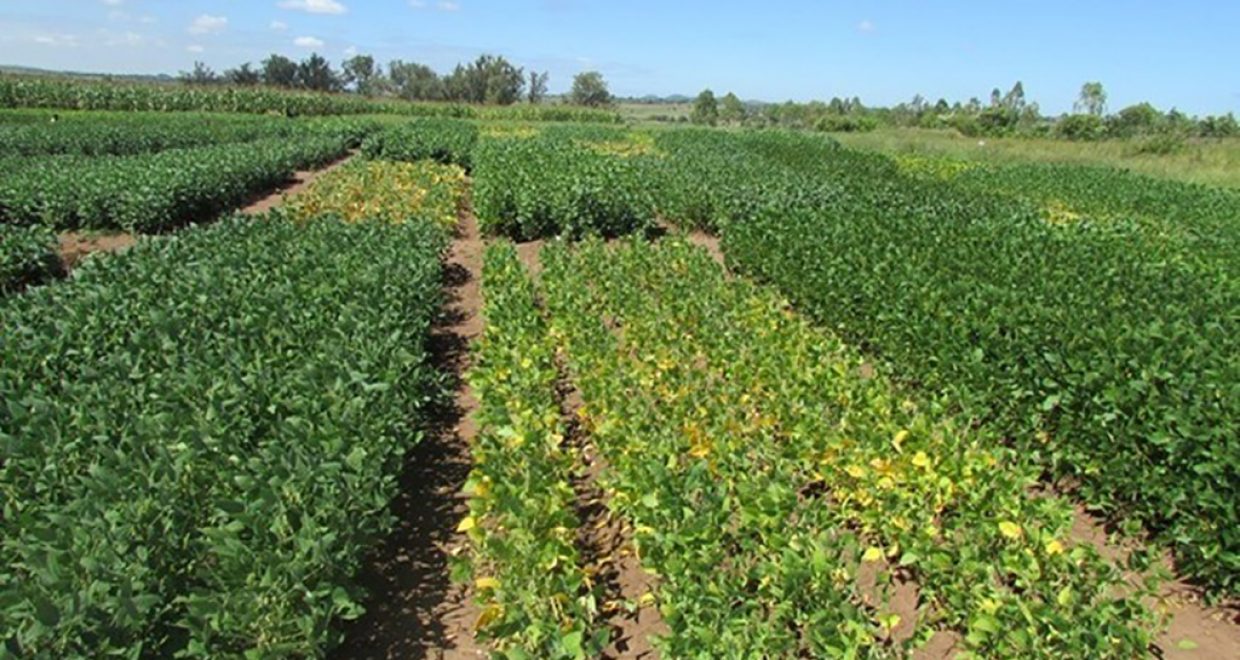Inoculation and Phosphorus Application Improves Soybean Water Use and Yield
The paper “Inoculant, nitrogen and phosphorus improves photosynthesis and water-use efficiency in soybean production“, published in The Journal of Agricultural Science, has been chosen as the latest Editorial Highlight.
The gap between potential and actual soybean yield achieved by farmers in the Southern Africa region is high due to limited investments in inputs, poor agronomic management practices and lack of quality seeds for improved varieties. In addition to the external observable soybean architectural features, a good understanding of the physiological processes and water use efficiency (WUE) offer information for further growth and yield improvement through breeding. Inherent genetic information that controls the physiological processes and WUE of soybean could be engineered to breed for varieties that are adapted to the frequent drought events in the region.
A research project that was conducted during the 2017 and 2018 growing seasons in two agro-ecologies (Angonia and Ruace) of Mozambique provided insights into the changes in the soybean physiological processes and WUE that impact yield. The agronomic practices that were tested included inoculation with Bradyrhizobium diazoefficiens strain USDA110 formerly known as Bradyrhizobium japonicum and application of nitrogen and phosphorus. Two soybean varieties, Safari (non-promiscuous) and TGx 1740-2F (promiscuous that nodulates freely with resident rhizobia) were used in the research to collect data on plan growth and development, transpiration, photosynthesis, leaf area index, radiation interception and WUE from the beginning of flowering to maturity. The results indicated that the transpiration rate varied considerably with interaction between locations, growth stages, varieties and treatments.
At podding, transpiration rate of phosphorus treated soybean plants was low suggesting that fertilizer application leads to less water loss during crop development. Soybean that was neither inoculated nor fertilized took a longer period for the canopy to close, had lower nutrient uptake at flowering and a decreasing leaf area index between podding and grain filling stages that led to open large exposed intra-row spaces. Large intra-row spaces encouraged faster air movement creating a steep water vapour gradient hence more water loss through transpiration. Photosynthesis rate and WUE varied with variety, growth stages and inputs within agro-ecologies. Fertilized TGx 1740-2F photosynthesized more at flowering than phosphorus treated Safari at podding stage. Increase in the photosynthesis rate between podding and grain filling had influenced yield. Inoculated soybean had an elevated photosynthesis rate that corresponded to better WUE leading to higher yield. Soybean WUE was higher when inoculated. This indicates that the use of inoculant, timely application of N and P fertilizers in soybean production provide important elements necessary for photosynthesis and better WUE that translates into improved soybean yield in Mozambique and the larger southern Africa region.
The results from this study will complement breeders’ effort in developing water and phosphorus efficient varieties suited for a wide range of agro-ecologies with changing climatic conditions characterized by low availability of water for agriculture. Consequently, better WUE bred soybean will lead to increased yield per unit area among smallholder farmers.


The Journal of Agricultural Science Editorial Highlights are selected by the Editor-in-Chief and are freely available for one month. View the recent selections here.






